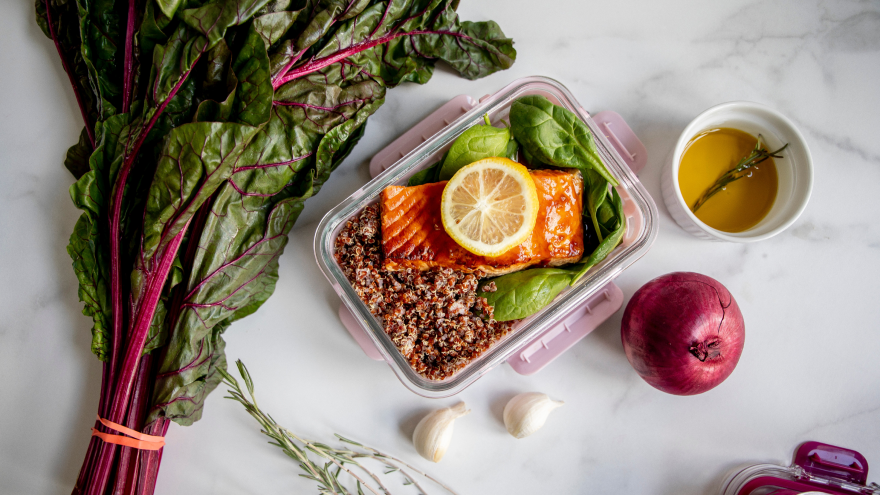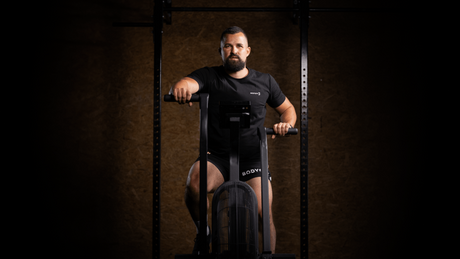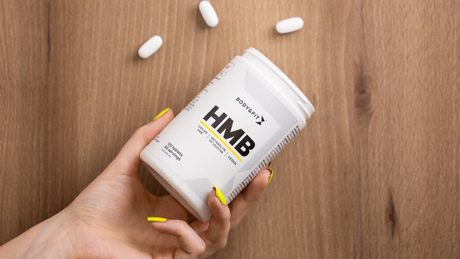Lean or clean bulking is a definite buzzword within the health and fitness industry when it comes to gaining muscle. But what does it mean - how does it help you build muscle and lose fat? And how is it different to how people bulked up before?
What is bulking?
To meet your muscle gain goals is a simple equation — you eat more calories than your body needs per day and intensively work out. This process is called bulking. A good time to start a bulk is when you’ve cut down to quite a low body fat percentage and you want to grow muscle. But gain unnecessary fat and you effectively cancel that muscle out. This means there are a few different ways to bulk, read on to find out more about them.
What is lean bulking?
Here enters the ‘lean bulk’, which does exactly what it says, and is very on-trend nowadays for a few different reasons. It helps people achieve the sculpted muscular shape they want and is also considered to be healthier for you than dirty bulking (see question below). A lean bulk is a different way of gaining muscle. Although you do consume more calories than you usually would, a lean bulk is doing this in a less extreme and healthier way. The goal of a lean bulk is to get your calories from healthy and protein-rich foods, instead of indulging in calorie-rich fast foods. The higher protein intake during bulking helps prevent your body cannibalise its own muscle, and then it’s all about the proportion of carbs/fats/etc. eaten and how you work out. If successfully done, you’ll put on extra muscle mass as well as some fat mass probably. When you cut down your calorie intake again (called ‘cutting’), you lose the extra fat and you can let your new muscles shine! It’s important to eat enough protein during the cutting phase as it helps prevent losing unnecessary amounts of muscle.
What is a dirty bulk?
Before lean bulking became the buzz word, bulking up simply used to be about eating as many calories as you could in any form. This is now what is called a ‘dirty bulk’. Most people would up their protein and calorie count at the same time, eating junk food, fat and carb-filled shakes, anything their heart desired in order to bulk up. It does of course help you to bulk but at first you’ll put on a lot of mass everywhere. The muscle gained can be fully or partially hidden under a large layer of fat. Again, after a dirty bulk the same way as in a lean bulk, people ‘cut’ and drastically cut calories, lower their body’s fat distribution and show off their underlying muscle.
How do I define the lean or clean bulk?
As one popular bodybuilding site puts it:
“The clean bulk means consuming healthier foods, and paying attention to what you're eating and when you're eating, not just on the total number of calories.”
What is lean body mass and why is it important?
Lean body mass is associated with your Basal Metabolic Rate (BMR), the number of calories you burn at rest. It is to do with the ratio and distribution of muscle within your body. Lean body mass is very important. It's not just about looking great or being stronger, the right amount of lean body mass is actually critical for a healthier life long-term. Lean and muscular bodies burn more calories at rest than those higher in fat. In short, it keeps your body working better, is healthier, probably contributes to a lower blood pressure, and lowers the risk of disease. Lean body mass and upping muscle through resistance training is particularly important as we age.
How much muscle will I gain with a lean bulk?
Your body can only build a certain amount of muscle within a set time period. How much depends on where you are in your fitness journey, your age, training history, etc. While beginners can pack on quite a few kg of muscle in a short amount of time, you’ll see less muscle growth the more advanced you get and the further along you are. This is because everyone has an optimum amount of muscle gains, and once it’s getting towards that number of kg it naturally slows down. It is also to do with your natural body shape — for example if you have a small frame (bone structure) you’ll put on less muscle than someone with a naturally bigger frame. Beginners can generally gain around 6.5 kg of muscle in the first 6 months to a year, whereas if you’re already ripped that number drops to around 0.9 kg per year.
Is it possible to lean bulk without gaining unwanted fat?
It’s probable you’ll gain at least some fat when lean bulking. In order to gain muscle you have to eat more calories than you burn, and doing so will likely lead to fat gain. People try to avoid this either by not eating enough calories or doing too much cardio. Unfortunately, this means they also don’t gain muscle. We think it’s better to try to see it as a long term goal, if you put on some fat in the short term make it your goal to turn it into muscle in the long term. You can also try cutting first, cutting down your body fat percentage and then doing the bulking process afterwards. This also depends on how much fat you have at the beginning of your process.
What is cutting?
Bulking and cutting are seen in bodybuilding as two very separate phases ‘required’ to improve one’s physique. ‘Bulking’ is the main process of consuming obscene amounts of all types of calories while training hard, and ‘cutting’ is then cutting back – mostly on carbs – to burn fat and reveal a ripped new physique beneath. It is also known as ‘dry training’.
How much extra should I eat for bulking up?
We recommend you start your bulk by adding an extra 250 to 400 calories to your daily calorie requirement, up your protein intake and don’t eat too many carbs, or fats. The following 60% (protein), 20% (carbs), 20% (fats) is a good ratio of your different food groups. Then workout all those muscles with a good varied training regime. If you notice you’re gaining too much fat or your scales aren’t moving, simply adjust your calorie intake.
How much protein should I eat in a lean bulk?
We all know the importance of protein for muscle growth, so make sure you are eating 1.5-2 grams of protein per kg of bodyweight every day. If you are having trouble eating enough protein, adding in protein shakes, powders or smart food bars, are an easy way to boost your protein intake. An alternative to a classic protein powder, could be a so-called gainer like our Body&Fit Mass Perfection. These are both rich in protein and carbs and typically come in a bigger serving size. This helps to add protein and calories from a balanced source to your diet.
Is post-workout nutrition vital for lean bulking?
You can give special attention to a post-workout meal or shake in lean bulking. To maximise muscle growth and recovery, a post workout shake consisting of whey protein and a fast-acting carbohydrate (like maltodextrin) is ideal. Adding supplements like creatine monohydrate (5 grams) and glutamine (5-10 grams) to your own post-workout shake will further enhance its effectiveness. Simply adding a great quality post-workout shake like our Isolate Perfection — with everything already mixed in for you — can help you see more results, and fast.
I feel stronger, but I don’t feel like I’m bulking - what’s going on?
One of the best ways to know you’re gaining muscle is you notice you’re getting stronger. If you are gaining strength you will be gaining size too. If you are following a bulking programme, and not gaining strength or even losing strength, then you need to take a good look at what’s going on. You can always ask our experts using the chat module on our website, or the Body&Fit Instagram community to help. Having difficulties gaining weight? Try drinking your calories alongside eating right. Think fruit juices, full fat milk or, if you really want to get serious on gains try out our Body&Fit Massive Gainer.
Even in a lean bulk, rest and recovery is important
Remember you grow outside of the gym as well and rest is important! Your workouts serve as the main way you’ll experience muscle growth but if you don’t rest enough your results will definitely suffer. The rest days are the days your muscles regenerate and do the actual growing. We recommend weight training 4-5 times per week max and giving yourself a couple of days ‘off’ a week with no, easy, or less strenuous exercise.
However you decide to do your lean bulk, remember to track your progress along the way. It will keep you motivated to see your body changing. Find some scales at your local gym that measure muscle gain / fat percentage or invest in some at home. Try weighing yourself in the mornings, and do a fat percentage test every now and then if you can. And don’t forget to take pictures of how your body looked before you started, how it looks now, and what’s changing. Your weight isn’t the only tell-all sign of your transformation and if you’re used to losing weight, don’t get shocked. Gaining muscle can make you gain weight in the short-term since muscle is heavier than fat. Progress pictures are the best way to keep motivated and also track how much your body is changing. You’re now officially ready to start your lean bulk and impress your training buddies with your in-depth knowledge.



